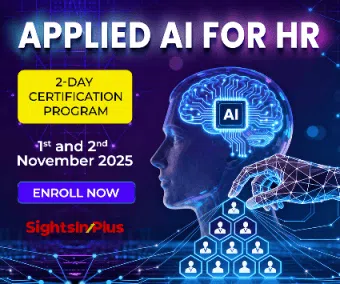Interplay between culture and leadership is perhaps one of the most romantic ballets in the area of organization development. The way leadership impacts the culture and the way culture influences the leadership is much intriguing. History is the evidence that right leadership has the potential to change the fortunes of the team, department, organization and perhaps the entire nation. Leaders influences the masses through the culture. It is the most lethal weapon in the arsenal of the leaders. Culture has the capability to drive the leadership message even in the absence of the leaders. Most great leaders know this secret and disproportionately focus on creating the culture which is conducive to realizing the business objectives. Some leaders, on the other hand, become the victim of the very same culture which they are supposed to architect and refresh. So how does this happen? These leaders are unable to break the existing cultural norms which become so strong over time that they render the leaders virtually powerless.
“Culture and Leadership are two sides of the same coin. If we say that something is wrong with the culture of the organization, it implies that something is wrong with the leadership of the organization, and vice versa” – Edgar H. Schein
Culture is still an abstract animal for many of us. Different organizations have different interpretation of culture – and there is nothing wrong about it! In simple words it is defined as a set of shared assumptions learnt by a group of people as they start to solve business problems over a period of time. It is important for people to stay together and learn together for them to have a culture. Most of thecultural assumptions get formulated in the formative years of the team, department or the organization. Interestingly many of these assumptions are defined at the top and get cascaded down the line. Also these assumptions are passed on to the new team members as a gospel way of working. Leaders move on but assumptions stay and continue to guide the individuals till the time they are challenged again and reformulated. The process of building, challenging, breaking and reformulating assumptions is incremental and iterative. Thus culture building never ceases to exist at any given point-in-time – it is continuous and always in action even if we are not able to see it.
So what are these assumptions all about? – These assumptions can be about anything and everything, within or outside of the organization. Some of the more relatable examples of these assumptions include the Power dynamics – who are the most powerful people and which are the most powerful departments in the organization? People relationships – how do we treat people? Resource consciousness – which are the most scare resources in the external environment? Mission & Vision – why do we exist and what do we want to achieve? Business strategy – how do we create value for our customers? Etc. etc. etc…
Many of these underlying assumptions are surfaced through espoused values and artifacts such as the ceremonies, rituals and other people practices. Some of these assumptions become so strong that it becomes very difficult for leaders to break or challenge them. For example Apple was founded by Steve Jobs and Steve Wozniac, both engineers, with the intention of building a savvy technology oriented company. When Apple tried to become more market oriented by bringing in John Scully from Pepsi, many believed that the company grew, but the technical community within Apple never accepted the marketing oriented executive. Apple eventually returned to its roots by bringing back Steve Jobs. Even today engineering and product innovation seem to be the most important functions in Apple.
It’s a classic case of culture triumphing over leadership. On the other hand companies deliberately try to bring in leaders from outside of the organization to challenge some of the existing defunct assumptions. For example in the 1970s British Airways was assumed to be an aviation company which was inward looking and operationally focused. It was making losses at the rate of $ 200 per minute. Collins Marshall was brought-in from the hospitality industry to turn around the company and challenge its existing assumptions. As a part of his vision he restructured the entire organization around customer experience and that became one of the most important virtues for the company – example of leadership triumphing over culture.
For leaders to culturally transform the organization they need to systematically and layer-by-layer unfold the basic assumptions of the organization around mission, vision, strategy, power dynamics, people relationships and many other facets. Thereafter leaders need to clinically critique those assumptions in the light of existing business realities to establish their relevance. Some of these assumptions may hold good but many may become obsolete. That is when the real soul searching starts for the organization. Establishing the new set of assumptions is the beginning of cultural transformation. Successful leaders are always on a lookout to challenge the invalid set of assumptions and establish a more relevant set of assumptions.
The chemistry between culture and leadership is quite intricate and yet romantic. Both complement each other, rub against each other, erode each other, but cannot exist without each other!



